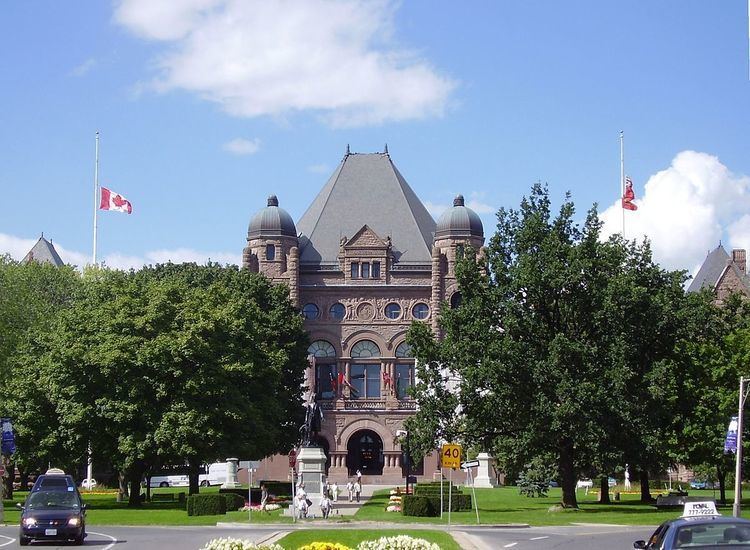The Personal Health Information Protection Act, also known as PHIPA ('pee-hip-ah'), is Ontario legislation established in November 2004. PHIPA is one of two components of the Health Information Protection Act. The Health Information Protection Act, also established in 2004, comprises two schedules: PHIPA (Schedule A) and the Quality of Care Information Protection Act (Schedule B).
PHIPA provides a set of rules for the collection, use and disclosure of personal health information, and includes the following provisions:
Consent is required for the collection, use and disclosure of personal health information, with few exceptionsHealth information custodians are required to treat all personal health information as confidential and maintain its securityIndividuals have a right to access their personal health information, as well as the right to correct errorsIndividuals have the right to instruct health information custodians not to share their personal health information with othersRules are provided for the use of personal health information for fundraising or marketing purposesGuidelines are set for the use and disclosure of personal health information for research purposesAccountability is ensured by granting an individual the right to complain if they have identified an error in their personal health informationRemedies are established for breaches of the legislationDecember 17, 2003: The Health Information Protection Act (Bill 31) was introducedJanuary 26, 2004: Public hearing at Standing Committee on General Government held in TorontoFebruary 2, 2004: Public hearing at Standing Committee on General Government held in Sault Ste. Marie, Kingston and LondonFebruary 9, 2004: and April 28, 2004 Clause-by-clause consideration of the Bill resulting in various amendmentsMay 17, 2004: Bill 31 passed third and final reading with unanimous support in the legislatureMay 20, 2004: Bill 31 received Royal AssentJuly 3 - September 3, 2004: Public consultation on regulationsNovember 1, 2004: Schedules A and B of the Health Information Protection Act come into forcePHIPA applies to individuals and organizations involved in the delivery of healthcare services. Under the Act, they are referred to as “health information custodians”.
A health information custodian can be any number of individuals or organizations who have custody or control of personal health information. Some examples of a health information custodian include:
Healthcare providers such as doctors, nurses, dentists, psychologists, paramedics, optometrists, physiotherapists, chiropractors, massage therapists, dieticians, naturopaths and acupuncturistsHospitalsLong-term care homes and homes for special careCommunity Care Access CentresPharmaciesMedical laboratoriesLocal medical officers of healthAmbulance servicesCommunity mental health programsMinistry of Health and Long-Term CareAn “agent” of a health information custodian includes anyone who is authorized by the health information custodian to do anything on behalf of the custodian with respect to personal health information. These actions are for the purposes of the health information custodian and not the agent.
Examples include:
Employees of the health information custodianPersons contracted to provide services to the health information custodian where the person has access to personal health information (e.g. copying or shredding service, records management service)Volunteers or students who have any access to personal health informationThe Information and Privacy Commissioner of Ontario (IPC) is appointed by the Legislative Assembly of Ontario and is independent of the government. The IPC is responsible for ensuring that health information custodians comply with the Act. Under PHIPA, the IPC has the power to review and make rulings about complaints.
When the commissioner receives a complaint, a mediator may be appointed to try to solve the problem. The IPC has various powers to resolve complaints, including the power to order a health information custodian to:
Change or stop the way information is collected, used or sharedProvide access to the record of personal health informationCorrect the record of personal health informationThe Act covers the following subjects relating to personal health information in the province of Ontario:
Section 1: Interpretation and Application sets out of the purpose of the Act. It defines key terms used throughout the Act, such as "health information custodian" and "health information agent".Section 2: Practices to Protect Health Information details the required practices for the handling of personal health information and health records. Accountability of information is also discussed.Section 3: Consent Concerning Personal Health Information discusses consent for the use, collection and disclosure of personal health information. Capacity to consent and characteristics of substitute decision-making are outlined.Section 4: Collection, Use and Disclosure of Personal Health Information outlines the situations for when personal health information can be used, collected and disclosed, and for what purposes.Section 5: Access to Records of Personal Health Information and Correction summarizes an individual's right of access to their personal health information, and the necessary steps that are taken to correct information within their record if need be.Section 6: Admission and Enforcement details the role of the Commissioner in enforcing the Act.Section 7: General explains the general applications and details of the Act, including non-retaliation, immunity, Crown liability, reliance on assertion, offences and regulations. 
